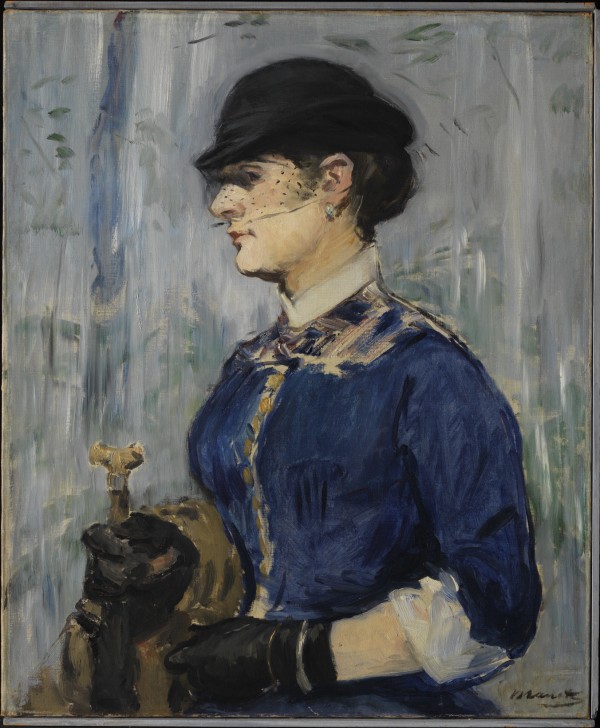Young Woman in a Round Hat (Jeune Femme au Chapeau Rond)
Young Woman in a Round Hat (Jeune Femme au Chapeau Rond)

About This Work
Provenance
The artist’s estate sale, Hôtel Drouot, 5 Feb. 1884, no. 36, sold to M. Samson, possibly a pseudonym and/or agent. Auguste Pellerin (1853–1929), Paris, by 1902; [sold to Galerie Bernheim-Jeune, Paul Cassirer and Galerie Durand-Ruel, 2 Feb. 1911]; sold to John Quinn (1870–1924), New York, 3 Apr. 1911; [sold to Durand-Ruel, New York, 9 Nov. 1911]; sold to Martin A. Ryerson (1856–1932), Chicago, 24 Apr. 1912; by descent to Mrs. Martin Ryerson, Chicago; her bequest to The Art Institute of Chicago, 29 May 1937; [sold to E. & A. Silberman Galleries, New York, 29 Apr. 1947]; sold to Henry Pearlman, New York, by May 1953; Henry and Rose Pearlman Foundation, after 1974.
Critical Perspective
Manet came from a well-to-do bourgeois home and so found an ease and familiarity in depicting women of his class. He chose to paint this young woman in profile, and to hide her eyes behind a dark smudge of black veil, making it difficult to read her expression. She wears what appears to be a wealthy woman's walking ensemble, one designed for promenading on the then recently constructed boulevards and in the newly built parks of Paris.
Never exhibited during Manet’s lifetime, this painting has provoked speculation about whether the subject was a friend or a model. She is dressed in a walking suit, and the object she carries is identified as a parasol, umbrella, or walking stick. The picture epitomizes what the poet and critic Charles Baudelaire considered a defining feature of images of modern life: the changing fashions of ladies’ dresses.
The painting dates to the late 1870s, when Manet was experimenting with the high-keyed colors and feathery brushstrokes of younger artists such as his friend Claude Monet and his sister-in-law Berthe Morisot. They urged Manet to take part with them in the independent exhibitions organized by Edgar Degas and other Impressionists but Manet - who longed for official recognition - refused, continuing to submit works to the jury of the Salon, the annual art exhibition sponsored by the French government.
